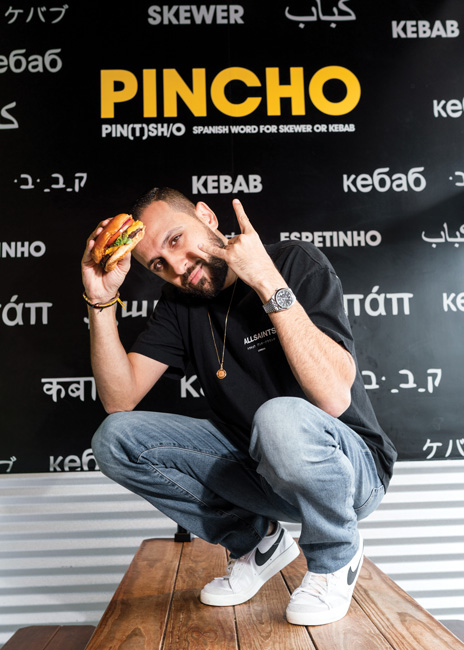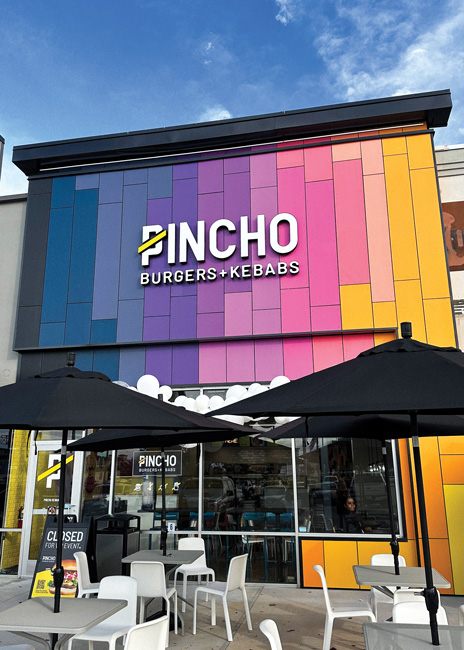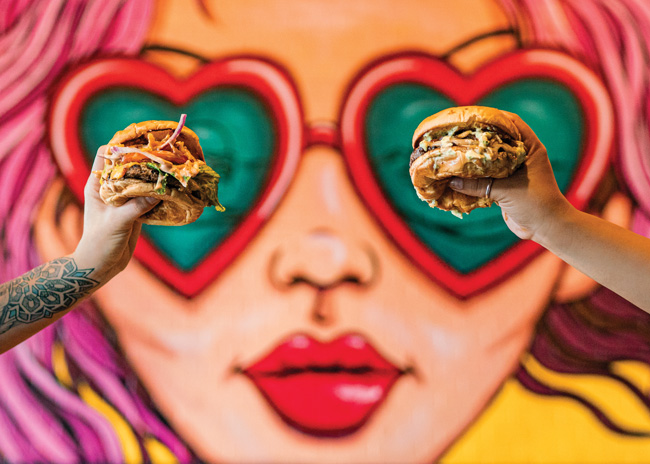 Otto Othman, Co-Founder & CEO, PINCHO Burgers & Kebabs.Launched in Miami as Pincho Factory in 2010, starring Otto Othman’s mom’s beloved Latin-style kebabs (pinchos) and a few sandwiches, PINCHO Burgers & Kebabs has emerged as a well-differentiated brand primed for expansion. With 10 units across South Florida and buoyed by a $20 million investment in 2021 from private-investment group Savory Fund, PINCHO ventured into Texas last year. As of late January, three units had opened in the Houston market with another three planned there, says Othman, who founded PINCHO with his cousins, Nedal and Nizar Ahmad.
Otto Othman, Co-Founder & CEO, PINCHO Burgers & Kebabs.Launched in Miami as Pincho Factory in 2010, starring Otto Othman’s mom’s beloved Latin-style kebabs (pinchos) and a few sandwiches, PINCHO Burgers & Kebabs has emerged as a well-differentiated brand primed for expansion. With 10 units across South Florida and buoyed by a $20 million investment in 2021 from private-investment group Savory Fund, PINCHO ventured into Texas last year. As of late January, three units had opened in the Houston market with another three planned there, says Othman, who founded PINCHO with his cousins, Nedal and Nizar Ahmad.
A computer information systems major in college, Othman later veered into interactive design and marketing. He spent several years as a creative director, including four years at Publicis Sapient, a global digital business consulting company, before launching PINCHO. He has since worked to steer the brand into the fast-casual fast lane, introducing its distinctive, Latin take on American menu classics and vibrant brand experience to a wider audience.
Othman shares some highlights and challenges of the journey so far.
What have been some of PINCHO’s biggest milestones?
OO: We set out to create a really cool, elevated Latin street-food concept serving simple, well-known foods — skewers, bowls, burgers, hot dogs, chicken sandwiches — but with our own unique flavor profiles. Our first location was a little hole in the wall, but within three years we’d opened a second Miami unit. Pincho in Spanish means kebab, or skewer. With my mom’s recipe as inspiration that was the root of it, but we soon became known for our burgers. In 2015, we were the first local brand to win the South Beach Food & Wine Festival Burger Bash. We won it again in 2019, and a bunch of other awards in between, and our burgers have been featured on the Travel Channel and the Today Show.
 Images courtesy of PINCHO Burgers & KebabsAs we grew, we made the decision to change our name. Locally, everyone knew us as Pincho Factory, but in other markets that was confusing — people didn’t get that we were a restaurant. In 2019 we changed it to PINCHO Burgers & Kebabs, which is a better reflection of the brand.
Images courtesy of PINCHO Burgers & KebabsAs we grew, we made the decision to change our name. Locally, everyone knew us as Pincho Factory, but in other markets that was confusing — people didn’t get that we were a restaurant. In 2019 we changed it to PINCHO Burgers & Kebabs, which is a better reflection of the brand.
National exposure led to lots of people asking to franchise the brand, so we did a few franchised units while still developing our own stores. By the time we hit 10 restaurants, however, we realized franchising wasn’t for us. We were still a very young brand and wanted to control our destiny. In 2021, when we partnered with Savory, we bought back all franchised units. Savory isn’t just an investor, they’re hands-on operators and business partners with deep experience in helping brands like ours grow. With them, we’ve taken PINCHO from South Florida into Texas. The third Texas unit, opened in January 2024 in Conroe, was our biggest opening yet.
How has PINCHO’s menu evolved since its launch?
OO: Our original menu was simple by design. We were a kebab joint, and kebabs were sold individually and as additions to bowls. We now also offer kebab plates with choice of two sides. And the original menu had just one burger. We now have seven. The national press we received for our Toston Burger, which uses fried plantain slices instead of a bun, really put us on the map. It’s an example of our mission, which is to offer foods people know, with flavors they’ve never experienced. We stay true to our Latin street-food core, but we’re always evolving and we’re really big on LTOs. A recent huge hit: the Birria Burger, with Oaxaca cheese, beef birria, red onions and cilantro with birria consume on the side.
 PINCHO has doubled down on experience — music, aromas, authentic materials and vibrant murals painted by Miami-based artists.
PINCHO has doubled down on experience — music, aromas, authentic materials and vibrant murals painted by Miami-based artists.
Have your spaces evolved significantly, as well?
OO: We introduced our newest prototype with the move into Texas. It’s beautiful and super-efficient. Our sweet spot for size is 2,200 to 2,400 square feet, which gives us enough space for a comfortable, productive kitchen and a cool front-of-house vibe. We’ve doubled down on experience — music, aromas, authentic materials and vibrant murals painted by Miami-based artists. You feel like you’re transported to Miami when you walk in. I’m a huge believer that people want to see each other, to sit down and break bread together, so the front-of-house experience is important. With this latest prototype, we’re already seeing higher dine-in sales.
Our kitchens have evolved, as well. In particular, advancements in cooking technology have significantly improved thruput. It used to take us 8 minutes to cook a fresh burger. It now takes 90 seconds. Kebabs used to take us 12 minutes and now take 5.
What lessons have you learned from taking a locally loved brand into a new market?
OO: One is to carefully study psychographics and demographics. For us, the data showed that Houston, a diverse city with large populations of Latinos and foodies, was a great fit. Another is to really understand local tastes. We had to make some after-opening adjustments to our beverage menu, and increase the spice levels in some of our foods to better meet local preferences.
Another big lesson was to test brand messaging locally. We’re very Miami-proud and we planned to celebrate that as we headed into Texas with prominent “Born in Miami” signage, which is a tagline we use here at home. Thankfully, our Texas team steered us away from that. It was an attitude shift. We’re from Miami and we’re all about South Florida, but we want to be part of the community and a Texas fan-favorite brand. It was a good lesson to come in humbly.
On a personal level, I’ve also learned that it’s tough for founders to no longer be able to be hands-on and making every decision as their brands scale up. It’s harder to delegate decisions than to delegate tasks, but I’m lucky to have an incredible, experienced team.
What comes next for PINCHO?
OO: We’re committed to further expansion in Texas, and we have plenty of room to grow in Florida — here in Broward County but also farther north in cities like Tampa, Orlando and Palm Beach. They’re both big states, so they’ll keep us busy for a while.
